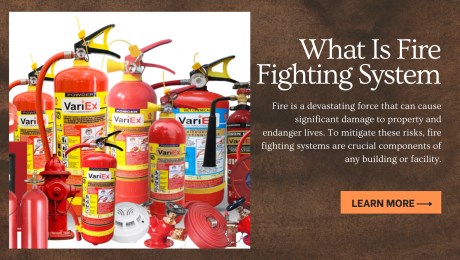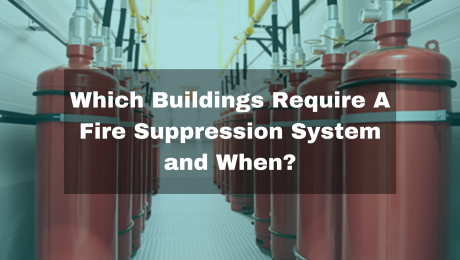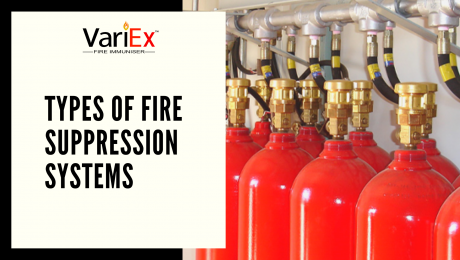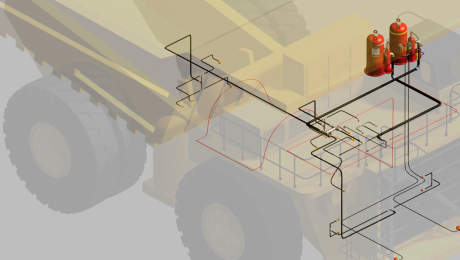Fire Suppression Systems are crucial components of comprehensive fire safety strategies, designed to swiftly and effectively control or extinguish fires in various environments. These systems go beyond traditional fire protection measures, providing rapid response and minimizing potential damage.
Key Features:
- Diverse Suppression Agents:
- Fire Suppression Systems employ a range of agents, including water, foam, gases, and chemicals, tailored to specific fire types.
- Automatic Activation:
- These systems activate automatically upon detecting fire indicators, ensuring immediate response without human intervention.
- Precision and Efficiency:
- Advanced technology allows for precise targeting of fire sources, minimizing collateral damage while efficiently suppressing flames.
- Versatility:
- Suitable for diverse settings, from residential and commercial spaces to industrial facilities.
- Customizable to specific fire risks and environmental factors.
Benefits:
- Occupant Safety:
- Fire Suppression Systems prioritize the safety of occupants, providing a quick and efficient response to potential fire threats.
- Asset Protection:
- Swift activation reduces property damage, protecting assets and minimizing financial losses.
- Business Continuity:
- The rapid suppression of fires supports business continuity by minimizing downtime and operational disruptions.
- Environmental Considerations:
- Some systems utilize eco-friendly suppression agents, addressing environmental concerns.
Conclusion: Investing in a Fire Suppression System is a proactive measure to ensure the safety of occupants, protect assets, and mitigate potential fire-related damages. These systems offer a reliable and efficient response, making them indispensable for safeguarding various settings against the destructive impact of fires.
What Is Fire Fighting System
A fire fighting system is an essential safety measure implemented in buildings to mitigate the risks associated with fire incidents. It comprises a combination of equipment, devices, and procedures designed to detect, control, and extinguish fires effectively. The primary components of a fire fighting system include fire detection and alarm systems, fire extinguishers, fire hydrants, and automatic sprinkler systems. Fire detection and alarm systems are crucial in early fire detection and alerting occupants, enabling them to evacuate the building promptly while the fire is extinguished. Fire extinguishers provide a means to extinguish small fires before they escalate, whereas fire hydrants connect to the municipal water supply and ensure a continuous flow of water for firefighting operations. Automatic sprinkler systems play a critical role in suppressing fires, as they activate automatically when the ambient temperature rises above a predetermined level. Overall, a well-designed fire fighting system is crucial for safeguarding life and property in the event of a fire emergency.
- Published in ABC Fire Extinguisher, CO2 Fire Extinguisher, Fire Alarm, Fire Extinguisher, Fire Fighting System, FIre Hydrant, Fire NOC, Fire Safety Equipment, Fire Sprinkler System, Fire Suppression
Which Buildings Require A Fire Suppression System and When?
It’s necessary to have the proper extinguishing equipment at the ready when it comes to protecting your life and property from fire. In this case, Fire Suppression System plays a crucial role in preventing a fire from affecting costly damages to your building and averting injury or even death of residents or employees by allowing them proper time to leave the building after a fire is detected. Automatic fire suppression is the most suitable option for safeguarding your assets such as sensitive electronic equipment, priceless archives, and delicate paper documents and due to this, it is the best choice for ordinary office buildings, retail stores, and similar commercial properties. A fire suppression system uses dry chemicals, gases, wet chemicals, liquids, or foam to suppress fires while it is used in minimizing property damage, and downtime for your business.
- Published in Fire Suppression
Types of Fire Suppression Systems
Everyone cares about fire safety, whether he is a house owner or property owner, and they know that fire suppression systems are vigorous for preventing the spread of fire and protecting valuable assets. The major role of any fire suppression system is to detect fire and suppress it as soon as it starts and also preventing the fire from spreading. The fire suppression systems offer various levels of protection, and there are many types and sizes of fire suppression systems.
Let us get started!
- Published in Fire Suppression
Vehicle Fire Suppression System Benefits
Yes, safety cannot be compromised! When a fire breaks out in the engine compartment of any vehicle, it can cause destructive damages throughout the rest of the vehicle. Whether it’s heat, flammable liquids, or electrical components in an enclosed engine compartment that can pose a significant fire risk. An accident, or hydraulic line, or even a faulty part can result in a serious emergency. Even Significant damages due to fire tragedy such as loss of life, environmental impact, and higher insurance premiums can be proven enormously harmful. The Vehicle Fire Suppression system comes into the picture to avoid such situations!
- Published in Fire Suppression





